In today’s fast-paced financial environment, automating bank reconciliation is not just a trend; it’s a necessity for businesses aiming to enhance efficiency and accuracy. This article explores the transformative power of automation in streamlining the reconciliation process, making it easier for businesses to maintain accurate financial records while saving valuable time and resources.
Key Takeaways
- Automating bank reconciliation drastically reduces the time spent on manual processes, allowing for quicker financial oversight.
- Choosing the right software is essential; look for features that integrate well with your existing systems and offer user-friendly interfaces.
- Regular training and monitoring are crucial for ensuring that automated processes run smoothly and adapt to any changes in technology.
Why Automating Bank Reconciliation is a Game Changer
The Perils of Manual Reconciliation
Let’s face it, manual bank reconciliation is like trying to find a needle in a haystack—frustrating and time-consuming! You’re sifting through piles of paperwork, trying to match transactions, and let’s not even talk about the errors that can sneak in. One little mistake can lead to a big mess! It’s like playing a game of whack-a-mole, where every time you think you’ve got it, another issue pops up.
How Automation Saves Time and Money
Now, imagine if you could wave a magic wand and make all that hassle disappear. Automation does just that! By using software to handle the nitty-gritty of reconciliation, you can save up to 80% of the time you’d normally spend. That’s time you can use for more important things—like strategizing your next big move or maybe just enjoying a coffee break. Plus, with fewer errors, you’re not just saving time; you’re saving money too.
Real-Life Success Stories
Don’t just take my word for it! Many banks that have embraced automation have seen significant improvements. For instance, one bank reported a 50% reduction in reconciliation time and a noticeable drop in discrepancies. It’s clear that the impact of bank reconciliation automation is huge, changing how we manage money, making it more accurate and efficient. Banks that use automated systems see big improvements!
So, if you’re still stuck in the manual reconciliation rut, it’s time to consider making the leap to automation. Your future self will thank you!
Choosing the Right Tools for Automating Bank Reconciliation
When it comes to automating bank reconciliation, picking the right tools can feel like searching for a needle in a haystack. But don’t worry, I’ve got your back! Here’s what you need to know to make the best choice.
Features to Look For in Reconciliation Software
First things first, let’s talk about the must-have features. You want software that:
- Matches transactions in real-time: No one likes waiting around for updates.
- Reports exceptions automatically: Because who has time to hunt for errors?
- Offers customizable rules: Tailor it to fit your unique needs.
- Keeps clear audit trails: Transparency is key, folks!
- Integrates with your existing systems: You don’t want to start from scratch.
- Has a user-friendly dashboard: If it’s complicated, you’ll just avoid using it.
Comparing Popular Reconciliation Tools
Now that you know what to look for, let’s compare some popular options:
| Tool Name | Real-Time Matching | Exception Reporting | Custom Rules | Integration | User-Friendly |
|---|---|---|---|---|---|
| Tool A | Yes | Yes | Yes | Yes | Yes |
| Tool B | Yes | No | Yes | Yes | No |
| Tool C | No | Yes | No | Yes | Yes |
Integrating Automation with Existing Systems
Finally, don’t forget about integration! You want your new software to play nice with what you already have. This means:
- Checking compatibility: Make sure it works with your current systems.
- Planning for data migration: You don’t want to lose any important info.
- Training your team: Everyone needs to be on the same page to make this work.
Remember, investing in the right reconciliation software is not just about saving time; it’s about boosting your team’s productivity and ensuring your financial accuracy.
So, gear up and get ready to automate your bank reconciliation like a pro!
Best Practices for Implementing Automated Bank Reconciliation

Setting Up Your Automation Workflow
When you’re diving into the world of automated bank reconciliation, the first step is to set up a solid workflow. Think of it like building a house; you need a strong foundation! Here’s how to get started:
- Choose the right software that fits your needs. Look for features like real-time updates and easy integration with your existing systems.
- Map out your processes. Identify what needs to be automated and what can stay manual (for now).
- Test your workflow with a few transactions before going full throttle. It’s like a dress rehearsal for your financial show!
Training Your Team for Success
Your team is your greatest asset, so make sure they’re ready to embrace the change. Here’s how:
- Conduct training sessions to familiarize everyone with the new tools. Make it fun—maybe even a little competition!
- Create easy-to-follow guides or cheat sheets. No one likes to feel lost in the tech jungle.
- Encourage feedback. Your team will have insights that can help improve the process.
Monitoring and Adjusting Automation Processes
Just because you’ve set it and forget it doesn’t mean you can walk away! Keep an eye on things:
- Regularly review your reconciliation reports. Look for patterns or discrepancies that pop up.
- Adjust your processes as needed. If something isn’t working, don’t be afraid to tweak it!
- Stay updated on software features. New tools and updates can make your life easier, so keep your eyes peeled!
Remember, the goal of automation is to make your life easier, not to add more stress. So, keep it simple and fun!
Overcoming Challenges in Automating Bank Reconciliation

Common Pitfalls and How to Avoid Them
Let’s face it, automating bank reconciliation isn’t all rainbows and butterflies. You might hit a few bumps along the way. Here are some common pitfalls and how to dodge them like a pro:
- Timing Differences: Sometimes, checks you’ve written haven’t been cashed yet, leading to mismatched balances. Keep a separate register for outstanding checks and follow up on those that linger for too long.
- Payment Complications: Returned checks can throw a wrench in your plans. Make sure to document these immediately and adjust your records to avoid confusion.
- Bank Fees: Surprise! Your bank might hit you with fees you didn’t see coming. Regularly review your bank fee schedules to stay ahead of these sneaky charges.
Ensuring Data Accuracy and Security
When it comes to your finances, accuracy is key. Here’s how to keep your data on point:
- Regular Reconciliation: Set a schedule to reconcile your accounts regularly. Daily checks can help catch discrepancies before they snowball.
- Use Automation Software: Invest in software that flags discrepancies automatically. This way, you can focus on fixing issues rather than hunting for them.
- Maintain Documentation: Keep detailed records of all transactions. This not only helps in audits but also ensures you have a clear trail to follow if something goes awry.
Adapting to Technological Changes
Technology is always evolving, and so should you! Here’s how to keep up:
- Stay Informed: Regularly update your knowledge about new tools and features in your reconciliation software. You don’t want to miss out on something that could save you time and effort.
- Train Your Team: Make sure everyone involved in the reconciliation process knows how to use the tools effectively. A well-trained team is your best defense against errors.
- Be Flexible: Be ready to adapt your processes as technology changes. What works today might not be the best solution tomorrow.
Remember, the goal is to make your life easier, not harder. Automating bank reconciliation should free up your time, not create more headaches! Embrace the change, and you’ll find that the benefits far outweigh the challenges.
Wrapping It Up: Your Path to Smooth Sailing in Bank Reconciliation
So there you have it! Mastering bank reconciliation doesn’t have to feel like climbing a mountain. With the right tools and a sprinkle of automation magic, you can turn this daunting task into a breeze. Remember, it’s all about finding what works for you and sticking with it. Whether you’re a seasoned pro or just starting out, these strategies will help you save time and keep your finances in check. So, roll up your sleeves, embrace the tech, and watch your efficiency soar! Happy reconciling!
Frequently Asked Questions
What is bank reconciliation and why is it important?
Bank reconciliation is the process of comparing your business’s financial records with your bank statements. It’s important because it helps ensure that your records are accurate, catches errors, and prevents fraud.
How can automation help with bank reconciliation?
Automation can save time and reduce mistakes by automatically matching transactions and highlighting discrepancies. This means less manual work for you and more accurate financial records.
What tools should I consider for automating bank reconciliation?
Look for software that offers features like real-time transaction matching, customizable rules, and integration with your existing financial systems. Popular options include QuickBooks, Xero, and FreshBooks.







